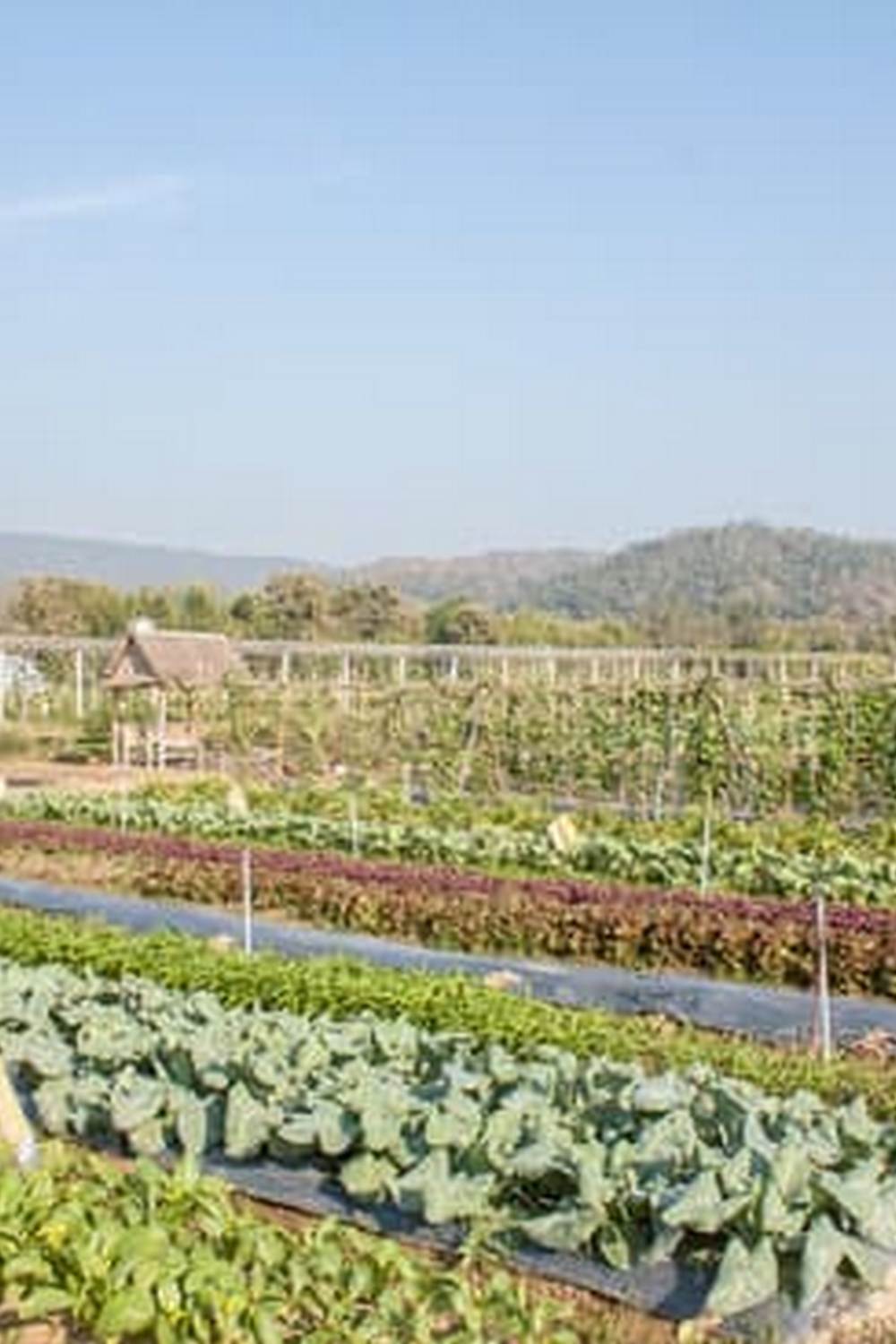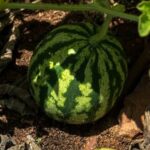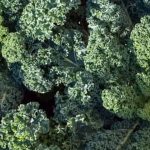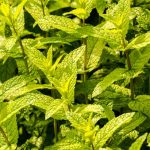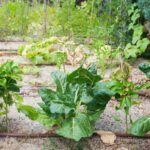Texas Coastal Bend vegetable gardening offers a unique opportunity for enthusiasts to cultivate a variety of crops in the fertile soils and favorable climate of this region. With its rich agricultural history and abundance of sunshine, Texas Coastal Bend provides an ideal setting for growing a diverse range of vegetables. From tomatoes to peppers and everything in between, the possibilities are endless for gardeners looking to establish their own bountiful veggie patches.
The temperate climate of the Texas Coastal Bend region creates a conducive environment for year-round gardening, allowing for multiple growing seasons and extended harvest periods. Alongside its moderate temperatures, the area’s soil conditions play a crucial role in determining which vegetables thrive best in this specific microclimate. Understanding these factors is essential for successfully cultivating a flourishing vegetable garden that yields an abundant bounty.
Whether you’re a seasoned gardener or just starting, knowing which vegetables are best suited for the Texas Coastal Bend can make all the difference in your gardening endeavors. By selecting the right crops that are well-adapted to the region’s climate and soil conditions, you can ensure a successful harvest while minimizing potential challenges along the way.
In this article, we will explore some of the top choices for vegetable varieties that flourish in the Texas Coastal Bend, as well as provide valuable tips for establishing and maintaining a productive garden in this vibrant agricultural hub.
Climate and Soil Conditions in the Texas Coastal Bend Region
Located along the Gulf Coast of Texas, the Coastal Bend region offers a unique climate and soil conditions that make it ideal for vegetable gardening. The warm temperatures and ample sunshine provide a long growing season, allowing gardeners to enjoy a variety of crops throughout the year. The sandy loam soil in the area is well-draining, which helps prevent waterlogged roots and promotes healthy plant growth.
When planning a vegetable garden in the Texas Coastal Bend, it is essential to consider the specific climate and soil conditions of the region. Some vegetables thrive in the hot and humid summers, while others are better suited for cooler seasons. Here are some of the best vegetables to grow in this area:
- Tomatoes – With their love for warm weather, tomatoes are a popular choice for Coastal Bend gardeners.
- Peppers – Whether sweet or spicy, peppers do well in the hot temperatures of the region.
- Squash – Varieties like zucchini and yellow squash are excellent options for Coastal Bend gardens.
In addition to selecting the right vegetables for your garden, it is crucial to amend the soil with organic matter such as compost or aged manure to improve its fertility and structure. This will help provide essential nutrients to your plants and promote healthy root development. By understanding and adapting to the unique climate and soil conditions of the Texas Coastal Bend, you can create a thriving vegetable garden that provides fresh produce year-round.
- Planting green beans early in spring allows them to mature before intense summer heat sets in.
- Cucumbers can be trellised to save space and prevent diseases caused by excess moisture on foliage.
- Leafy greens like lettuce and spinach can be grown during cooler months or partial shade areas to avoid bolting.
Best Vegetables to Grow in the Texas Coastal Bend
The Texas Coastal Bend region offers a unique climate and soil conditions that are ideal for growing a variety of vegetables. With its warm weather, ample sunshine, and rich soil, vegetable gardening in this area can be a rewarding experience. When choosing which vegetables to grow in your Coastal Bend garden, consider selecting crops that thrive in the local climate and will provide you with a bountiful harvest.
One of the most popular vegetables to grow in the Texas Coastal Bend is peppers. Whether you prefer sweet bell peppers or spicy chili peppers, these plants love the warm temperatures and well-drained soil found in the region.
Tomatoes are another excellent choice for Coastal Bend vegetable gardens, as they require plenty of sunlight and warmth to thrive. Additionally, leafy greens like lettuce, spinach, and kale are well-suited for the mild winters and hot summers of the Coastal Bend.
In addition to peppers, tomatoes, and leafy greens, other vegetables that do well in the Texas Coastal Bend include cucumbers, squash, okra, and beans. These crops enjoy the long growing season provided by the region’s climate and can produce abundant yields when properly cared for.
By choosing a mix of vegetables that are well-suited to the Texas Coastal Bend environment, you can create a diverse and productive garden that will keep your kitchen stocked with fresh produce throughout the year.
| Vegetables | Benefits |
|---|---|
| Peppers | Love warm temperatures & well-drained soil |
| Tomatoes | Require plenty of sunlight & warmth to thrive |
| Lettuce, Spinach, Kale | Well-suited for mild winters & hot summers |
Tips for Starting a Successful Vegetable Garden in Texas Coastal Bend
Starting a successful vegetable garden in the Texas Coastal Bend region requires careful planning and consideration of the unique climate and soil conditions in the area. One essential tip is to choose the right location for your garden.
Select a spot that receives plenty of sunlight, as most vegetables need at least 6-8 hours of direct sunlight daily to thrive. Additionally, ensure that the area has good drainage to prevent waterlogging, which can lead to root rot and other issues.
When it comes to preparing your soil for planting, conducting a soil test is highly recommended. The Texas A&M AgriLife Extension Service offers affordable soil testing services that can provide valuable information about the pH levels and nutrient content of your soil. Based on the results, you can amend your soil with organic matter or fertilizers to create an optimal growing environment for your vegetable plants.
To maximize space and productivity in your Texas Coastal Bend vegetable garden, consider practicing companion planting. This technique involves planting different crops together that benefit each other by deterring pests, attracting beneficial insects, or improving nutrient uptake.
For example, planting marigolds alongside tomatoes can help repel harmful nematodes and insects while also adding color to your garden. By implementing these tips and strategies, you can increase your chances of having a bountiful harvest from your vegetable garden in the Coastal Bend region.
| Tips for Starting a Successful Vegetable Garden in Texas Coastal Bend | Useful Information |
|---|---|
| Choose a sunny location with good drainage | Most vegetables require at least 6-8 hours of direct sunlight daily |
| Conduct a soil test | Texas A&M AgriLife Extension Service offers affordable soil testing services |
| Practice companion planting | Planting certain crops together can benefit each other by deterring pests or improving nutrient uptake |
Watering and Irrigation Methods for Vegetable Gardens in the Coastal Bend Area
When it comes to successful vegetable gardening in the Texas Coastal Bend region, proper watering and irrigation methods are crucial. With the unique climate and soil conditions of this area, gardeners need to pay special attention to ensure their plants receive adequate moisture for optimal growth. Here are some tips and techniques for watering your vegetable garden in the Coastal Bend:
- Mulching: One effective way to conserve moisture in your garden is by using mulch. Mulch helps prevent evaporation of water from the soil, reduces weed growth, and maintains a more consistent soil temperature. Organic mulches like straw, grass clippings, or leaves can be beneficial for vegetable gardens in the Coastal Bend.
- Drip Irrigation: Considering the hot and dry weather conditions in the Texas Coastal Bend, drip irrigation systems can be a great option for efficient watering. Drip irrigation delivers water directly to the base of plants’ roots, reducing water waste through evaporation and runoff. This method also helps prevent diseases that can occur with overhead watering.
- Watering Schedule: To determine how often you should water your vegetable garden in the Coastal Bend, consider factors like temperature, humidity levels, plant type, and soil moisture retention. A general rule of thumb is to water deeply but less frequently, ensuring that water reaches down into the root zone where plants can access it.
Properly managing watering and irrigation in your Texas Coastal Bend vegetable garden not only promotes healthy plant growth but also helps conserve water resources in this semi-arid region. By implementing these techniques and adjusting them as needed based on weather conditions and plant requirements, you can maintain a thriving garden that yields abundant produce throughout the growing season.
Pest and Disease Management in Texas Coastal Bend Vegetable Gardening
Common Pests in Texas Coastal Bend Vegetable Gardens
One of the challenges that gardeners in the Texas Coastal Bend region face is dealing with pests that can damage their vegetable crops. Some common pests to watch out for include aphids, caterpillars, beetles, and squash bugs. These pests can quickly multiply and wreak havoc on your garden if not properly managed. It is essential to regularly check your plants for any signs of infestation and take action promptly.
Effective Pest Control Methods
When it comes to managing pests in your Texas Coastal Bend vegetable garden, there are several effective methods you can implement. One common approach is using organic insecticides or insecticidal soaps to control pest populations without harming beneficial insects. Additionally, introducing natural predators like ladybugs or lacewings can help keep pest populations in check. Crop rotation, companion planting, and maintaining good garden hygiene are also important strategies to prevent pest infestations.
Dealing With Diseases in Your Vegetable Garden
In addition to pests, diseases can also pose a threat to your vegetable plants in the Texas Coastal Bend region. Common diseases that affect vegetable gardens include powdery mildew, blossom end rot, and damping-off. To minimize the risk of disease outbreaks, it is crucial to practice good sanitation by removing diseased plant material promptly.
Proper spacing between plants, adequate air circulation, and avoiding overhead watering can also help prevent the spread of diseases in your garden. Consider using disease-resistant varieties of vegetables whenever possible to reduce the likelihood of infections taking hold.
Harvesting and Preserving Your Vegetable Garden Produce in the Coastal Bend
Harvesting your fresh vegetables from your Texas Coastal Bend vegetable garden can be one of the most rewarding experiences for any gardener. Whether you have been growing tomatoes, peppers, cucumbers, or any other crops, knowing when and how to harvest them plays a crucial role in enjoying their flavors at their peak.
Timing Is Key
One of the essential aspects of harvesting your vegetable garden produce in the Coastal Bend is timing. Each crop has its own ideal harvesting time based on maturity levels and ripeness. For instance, tomatoes should be picked when they are fully ripe and have a deep color, while leafy greens like lettuce should be harvested before they bolt or turn bitter. To ensure maximum freshness and flavor, regular monitoring of your crops is necessary.
Preservation Methods
After harvesting your vegetables from your Texas Coastal Bend garden, it’s essential to know how to preserve them properly to extend their shelf life and enjoy them even after the growing season has ended. Canning, freezing, drying, and pickling are common methods used for preserving vegetables. Each method has its own set of instructions and requirements, so it’s crucial to research which preservation technique works best for each type of vegetable you have harvested.
Sharing Your Bounty
Once you have harvested and preserved your vegetable garden produce in the Coastal Bend region, you may find yourself with an abundant supply that you cannot consume on your own. Sharing your bounty with friends, family, neighbors, or local community organizations can not only spread joy but also reduce food waste. Additionally, sharing your harvest can foster a sense of community spirit among fellow gardeners in the area who may also have surplus produce to exchange or donate.
Community Resources and Support for Vegetable Gardeners in the Texas Coastal Bend Region
In conclusion, vegetable gardening in the Texas Coastal Bend region offers a unique and rewarding experience for both novice and experienced gardeners alike. By taking advantage of the various community resources and support systems available, individuals can enhance their gardening knowledge and skills while also benefiting from a sense of camaraderie with fellow enthusiasts.
From local gardening clubs to extension programs offered by universities like Texas A&M, there are plenty of opportunities for individuals to connect with others who share a passion for cultivating fresh produce in this distinctive region.
Moreover, these community resources can provide valuable insights into overcoming specific challenges that may arise when growing vegetables in the Texas Coastal Bend. With its unique climate and soil conditions, gardeners in this area must be prepared to adapt their techniques to ensure successful harvests. By tapping into the collective wisdom of local experts and fellow gardeners, individuals can learn effective strategies for pest management, disease prevention, and irrigation methods that are tailored to the conditions of the Coastal Bend.
Ultimately, engaging with community resources and support networks can not only help gardeners in the Texas Coastal Bend region achieve greater success in their vegetable gardens but also foster a sense of connection within the local gardening community. Whether through participating in workshops, sharing tips at gardening events, or simply exchanging seeds and produce with fellow enthusiasts, these interactions can enrich the overall gardening experience and inspire individuals to continue honing their skills in this distinctive environment.
So, if you’re embarking on a vegetable gardening journey in the Texas Coastal Bend, remember that you’re not alone – there is a vibrant community ready to offer guidance, encouragement, and friendship along the way.
Frequently Asked Questions
What Month Do You Plant Vegetables in Texas?
In Texas, the best month to plant vegetables is typically in early spring around March or April when the temperatures start to warm up. This timing allows the plants to establish themselves before the scorching summer heat arrives.
What Veggies Grow Best in Texas?
The veggies that grow best in Texas include okra, sweet potatoes, peppers, tomatoes, cucumbers, and squash. These plants thrive in the warm climate of Texas and can withstand the heat during the summer months.
What Vegetables Do Well in Texas Heat?
Vegetables that do well in the Texas heat are okra, black-eyed peas, watermelon, cantaloupe, and sweet potatoes. These plants have adapted to the high temperatures and can still produce a bountiful harvest even in the sweltering Texas summers.

If you’re looking to get into vegetable gardening, or are just looking for some tips on how to make your current garden better, then you’ve come to the right place! My name is Ethel and I have been gardening for years. In this blog, I’m going to share with you some of my best tips on how to create a successful vegetable garden.

